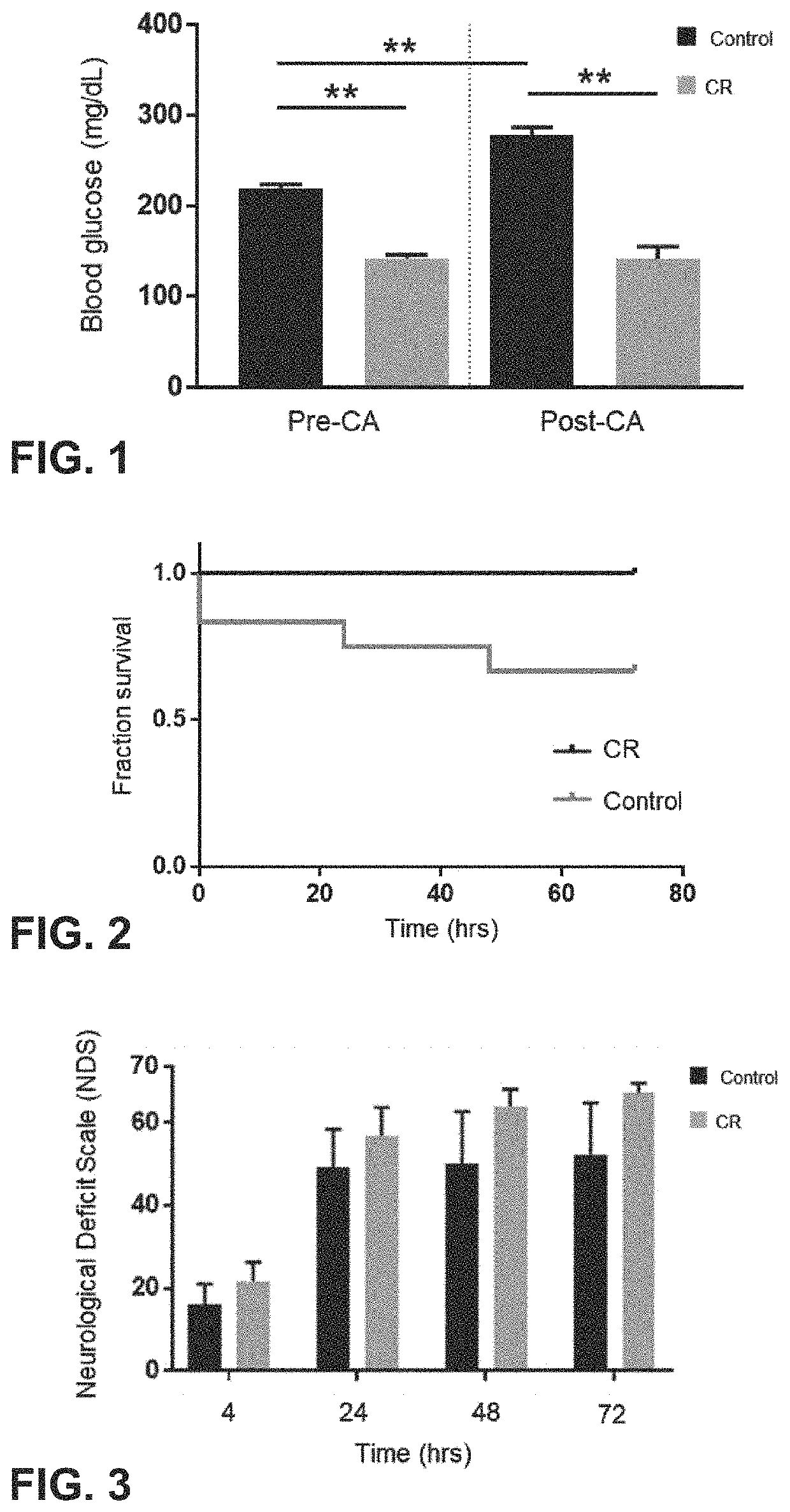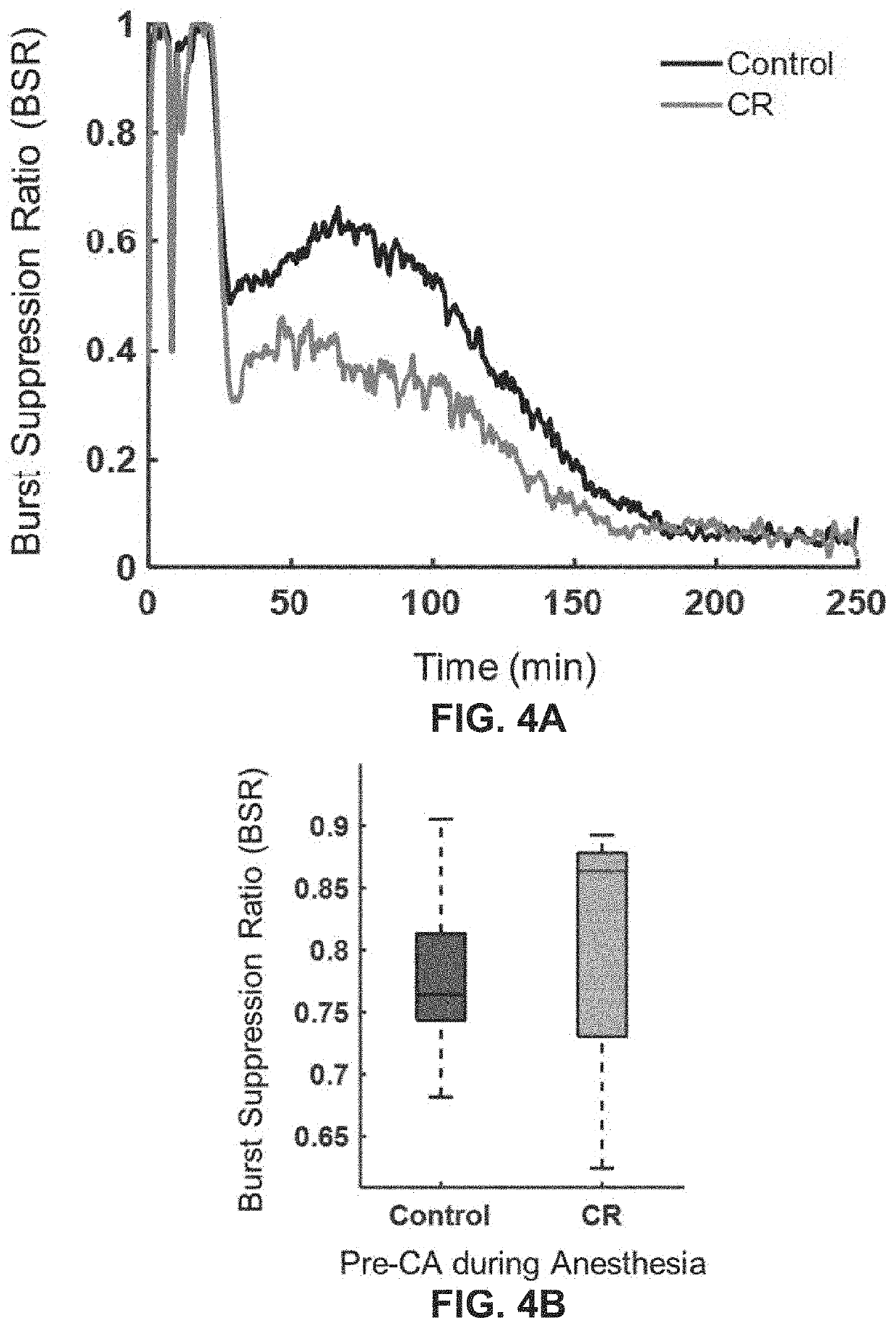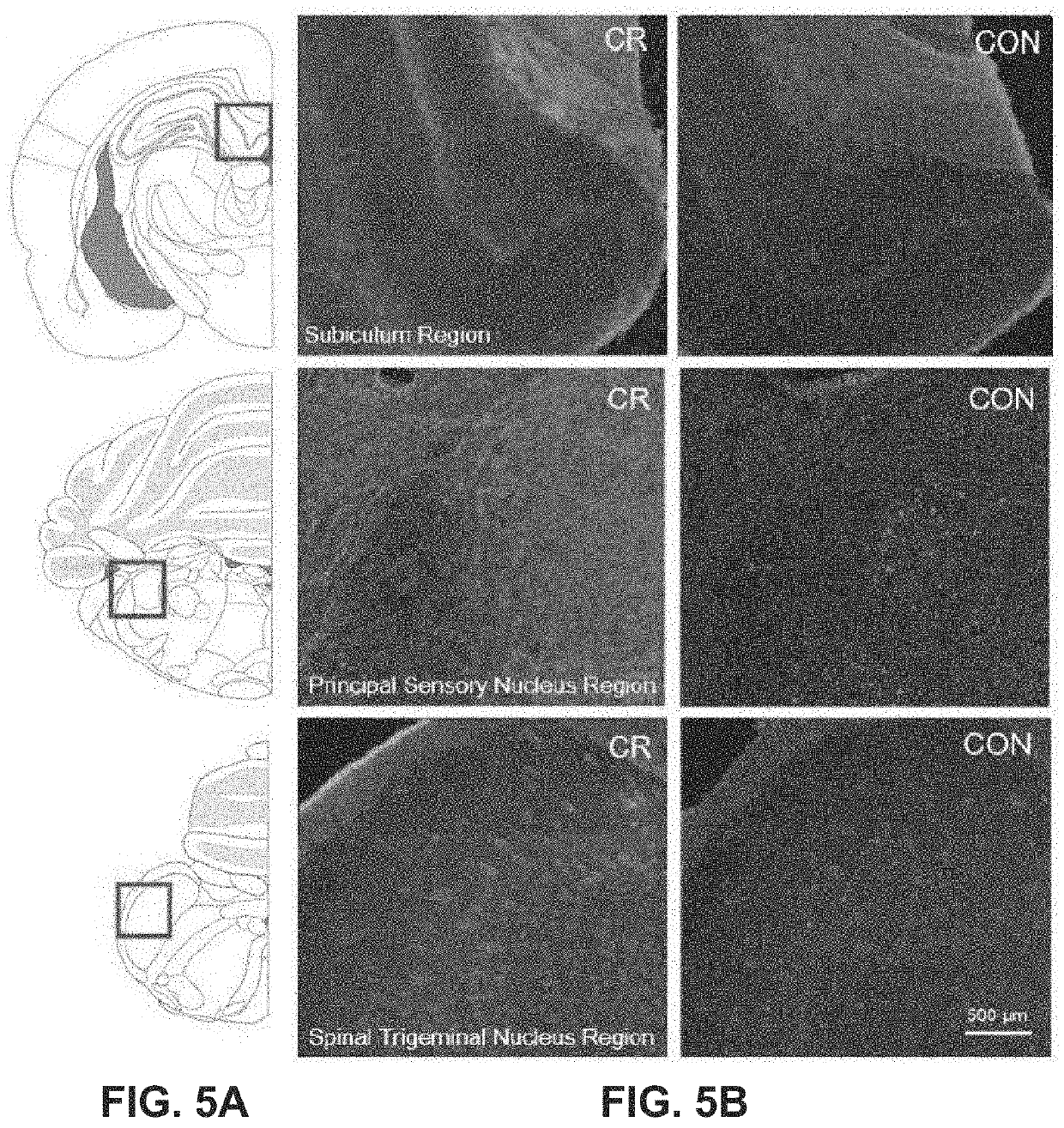Generation of personalized neuroprotective and cardioprotective nutrition programs featuring caloric restriction
a nutrition program and short-term caloric restriction technology, applied in the field of personalized neuroprotective or cardioprotective nutrition programs, can solve the problems of acute or short-term caloric restriction effects, brain function effects of overnight cr far from explored, and the neuroprotective and cardioprotective effects of nutrition programs featuring short-term caloric restriction have not been fully appreciated
- Summary
- Abstract
- Description
- Claims
- Application Information
AI Technical Summary
Benefits of technology
Problems solved by technology
Method used
Image
Examples
example 1
f Caloric Restriction in Rat Model
[0064]In this experiment, global ischemia by CA was induced in rats that were calorically restricted (75%) overnight for 14 h and assessed for changes in outcome. In an attempt to better understand such changes, levels of glucose, insulin, glucagon, corticosterone, and ketone bodies were measured in the blood, in addition to SIRT-1 and BDNF expression in the brain.
[0065]Materials and Methods
[0066]Animal Preparation
[0067]Adult male Wistar rats weighing 300-370 g were used. The animals were housed under standard conditions (23±2° C., 60-70% relative humidity, 12 h light and dark cycles; free access to food and water). Animals typically arrived 2 weeks prior to experiments and were handled daily for 5 min to promote habituation and reduction of stress levels. To enable monitoring of electrocorticography (ECoG), one week prior to the experiment, each rat had two electrodes (1.57 mm in diameter) implanted on the dura (2 mm anterior and 2.5 mm lateral to ...
example 2
n of Neuroprotective Nutrition Program
[0108]A 67-year-old male patient presents to the emergency department complaining of chest pains. The attending physician examines the patient by conducting a physical exam, including auscultation while checking his vital signs, electrocardiogram, chest x-ray, bedside echocardiogram, and blood tests results that include cardiac enzymes in addition to standard blood tests and any prior medical records suggestive of coronary artery disease and potential cardiac ischemia. Based on the results of the examination, the physician determines that the patient is at high risk of cardiac arrest. The physician evaluates the cerebral metabolic state of the patient by using a portable optical device which measures CBF and CMRO2. Because the CBF / CMRO2 ratio is 0.5 (which is significantly less than 1), the physician determines that a neuroprotective nutrition program for the patient should include acute caloric restriction of 75% for a period of 20 hours. The p...
example 3
t of Early Spreading Depolarization Via Ketone Injection
[0109]A 55-year-old female patient presents to the emergency department complaining of chest pains. While in the hospital, the patient experiences cardiac arrest. During the cardiac arrest, the patient's cerebral metabolic state is monitored via a portable optical / EEG device. During entry into cardiac arrest, it is seen that the patient's brain metabolism (measured by absolute CMRO2) is low (e.g., 2 / min / 100 g). Therefore, this patient is determined to be at risk of delayed spreading depolarization, potentially leading to worse neurological outcome. Based on this real-time feedback, ketone injection of beta-hydroxybutyrate (1.5 gm / kg body weight), followed by a continuous infusion of beta-hydroxybutyrate (0.18 gm / kg / hour), is given to mimic a calorically-restricted state and induce spreading depolarization earlier so as to provide neuroprotection during cardiac arrest.
PUM
 Login to View More
Login to View More Abstract
Description
Claims
Application Information
 Login to View More
Login to View More - R&D
- Intellectual Property
- Life Sciences
- Materials
- Tech Scout
- Unparalleled Data Quality
- Higher Quality Content
- 60% Fewer Hallucinations
Browse by: Latest US Patents, China's latest patents, Technical Efficacy Thesaurus, Application Domain, Technology Topic, Popular Technical Reports.
© 2025 PatSnap. All rights reserved.Legal|Privacy policy|Modern Slavery Act Transparency Statement|Sitemap|About US| Contact US: help@patsnap.com



